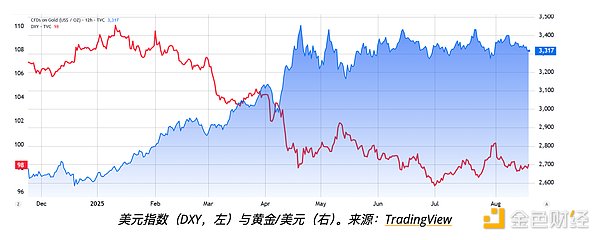Author: Marcel Pechman Source: cointelegraph Translation: Shan Ouba, Golden Finance
Bitcoin's drop below $113,000 reflects investor concerns about the US economy, stock markets, and crypto markets, but this volatility does not end Bitcoin's long-term bullish trend.
Key Points:
The Bitcoin options market is expressing extreme fear, but historical trends suggest a strong rebound is still possible.
Global economic pressures from US trade tariffs have dampened trader sentiment.
Bitcoin's price fell below $113,000 for the first time in more than two weeks, catching traders off guard and triggering the liquidation of $113 million worth of leveraged long positions. The previous day, Bitcoin hit a record high of $124,176. With the growing uncertainty in the macroeconomic environment, the market began to question whether the bull market was nearing its end. The Bitcoin price correction accelerated after news broke that the U.S. Securities and Exchange Commission (SEC) was reportedly investigating Alt5 Sigma for fraud and stock manipulation. The company recently reached a $1.5 billion partnership with former U.S. President Trump's World Liberty Financial. World Liberty, which lists Trump as "Founder and Honorary Chairman" on its website, raised approximately $550 million through two rounds of public token sales, positioning itself as a DeFi and stablecoin platform. In June, Trump disclosed $57.4 million in revenue from his stake in the company, while Eric Trump will join the board of directors of Alt5 Sigma. Crypto investors also reacted to a 1.5% drop in the Nasdaq 100 index. The decline stems from a study by MIT NANDA, based on interviews with 150 companies and 300 AI use cases, which found that 95% of companies failed to achieve rapid revenue growth through AI pilots. US Tariffs and Weakening Federal Reserve Confidence Another factor driving risk aversion is the US imposing new 50% import tariffs on 407 products containing aluminum and steel. These tariffs cover everyday items such as auto parts, plastics, and specialty chemicals, sparking economists' concerns about supply chain disruptions and rising consumer prices. According to CNBC, UBS Investment Bank raised its gold price forecast, predicting it will reach $3,700 by September 2026. UBS strategists believe that sub-trend economic growth, loose Federal Reserve policy, and a weakening dollar will drive gold prices higher. At the same time, the US fiscal deficit problem and doubts about the independence of the Federal Reserve also support this outlook.

As concerns about a recession and risks associated with Trump's businesses intensify, demand for downside protection in the Bitcoin derivatives market has surged. The Bitcoin options skew indicator turned bearish on Friday and continued to deteriorate, reflecting growing investor caution. The delta skew (the ratio of puts to calls) for Bitcoin 30-day options jumped to 12%, a more than four-month high. Under neutral conditions, this indicator typically fluctuates between -6% and +6%, reflecting the balance between call (buy) and put (sell) options pricing. A reading above 10% indicates extreme fear in the market, but such levels are typically unsustainable.
Previously, on April 7, the indicator surged as high as 13%, when Bitcoin fell below $74,500 for the first time in five months. Investors who took the risk back then saw a 40% return in the following month, with Bitcoin rebounding to $104,150 on May 8.
There is currently no evidence that Bitcoin's bull run is over. Traders often panic beyond rational expectations. In fact, Bitcoin may even benefit from potential outflows from the stock market, suggesting that the current turmoil is not enough to negate the market's long-term bullish trend.
 Jasper
Jasper




